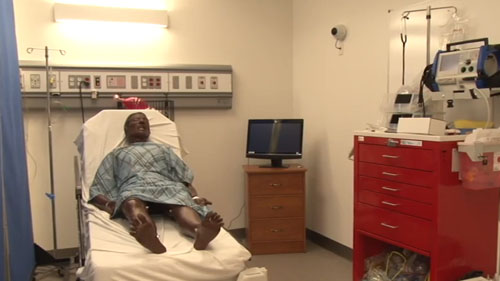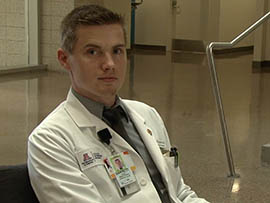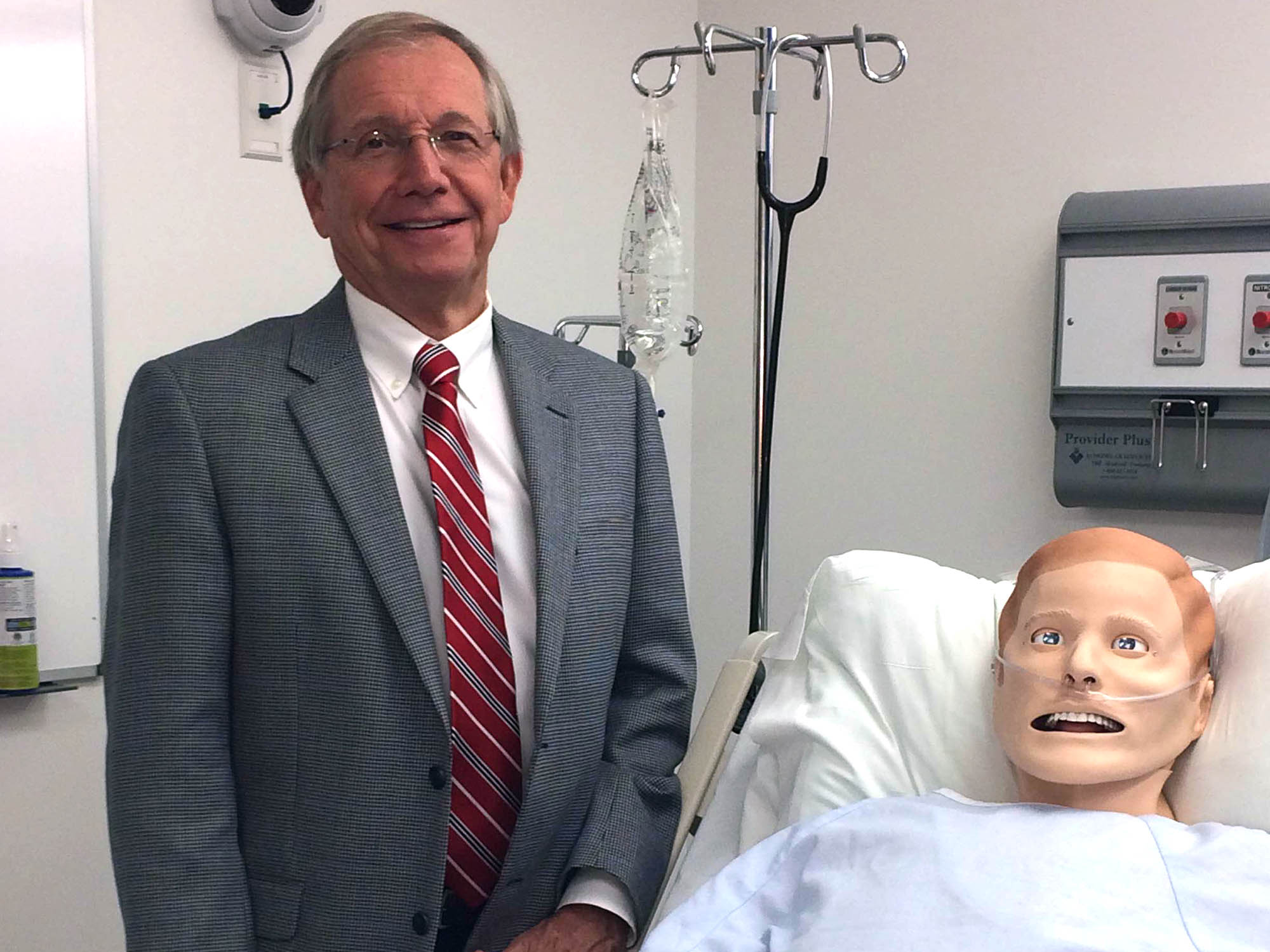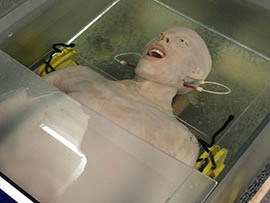Cronkite News has moved to a new home at cronkitenews.azpbs.org. Use this site to search archives from 2011 to May 2015. You can search the new site for current stories.
UA’s medical school expands simulation center for hands-on learning
PHOENIX – Garrett Frantz’s patient is going into cardiac arrest. Monitors blare as his heart rate and blood pressure drop, and members of Frantz’s team are yelling and frantically scurrying in every direction.It’s Frantz’s job to react quickly, and the decisions he makes are life-and-death.
“I knew what to do,” he said. “I knew the next steps.” listen
Should Frantz or another aspiring doctor lose a patient in the venue he’s describing, all that’s required his hitting the reboot button.
This is a typical day in the Center for Simulation and Innovation for Frantz, a third-year medical student at University of Arizona College of Medicine – Phoenix. The patients he and others treat are robotic mannequins and the cadavers they study here are synthetic.
Frantz said simulations are the best way to learn and give him a feeling of readiness.
“Once we get out into the real field you’ve actually had some experience doing these procedures,” he said. listen
Launched a year and a half ago, the center recently tripled in size in early September to 30,000 square feet of simulation space, something leaders said is needed to accommodate an increase in students.
The expanded center offers simulated hospital rooms, a simulated intensive care unit and more skill areas for students to learn how to perform specific procedures such as starting IVs, addressing internal bleeding and delivering babies.
For the medical students working here, the models are very real, said Dr. Marshall Smith, system director for the Center for Simulation and Innovation.
“Once you get started and you get to doing it you sort of lose sight that it’s not real,” he said. “You’re doing a code arrest and things are yelling and on around you. Once you get in the zone, you’re there.” listen
In fact, Smith said the models are so real to students that if they “die” at their hands they get emotional.
“It’s a long night of depression and self-reflection for them,” he said. listen
Smith said some medical schools even offer counseling for students who struggle emotionally after losing simulated patients. The robotic mannequins here test a student’s ability to react in many different situations.
They can breath, blink, sweat and have convulsions. They have heart and lung sounds. Some are designed to simulate childbirth. Instructors can speak for these patients through speakers in their mouths. One type of robotic patient allows students to practice administering anesthesia.
“They can get very, very sick if they have to,” Smith said.
The simulation center also has “syndavers,” synthetic cadavers for study. The equipment filling this expanded space doesn’t come cheap.
A basic simulation mannequin can cost anywhere from $40,000 to $80,000. Mannequins made specifically for anesthesia can cost more than $500,000. Smith said simulation is a safe and effective way to offer medical students real-world experience.
“A person learns much better by doing something than being told about it,” he said. listen
Al Bravo, the school’s associate director for public affairs, said the simulation center is available to students long after they have graduated.
“You can always come back here to practice, you can always come back here to learn more and see what the latest is,” Bravo said. listen
Frantz said he’ll enter the medical field self-assured because of his experience in the simulation center.
“There’s a huge difference between students who have gone to schools without simulation and students who’ve gone to schools with simulation,” he said. listen












